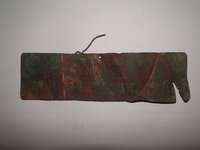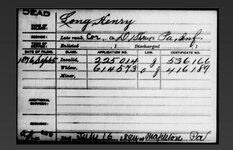Matt1344
Jr. Member
- Dec 10, 2012
- 44
- 39
- Detector(s) used
- White's Classic ID
- Primary Interest:
- Metal Detecting
Found this today detecting at a park in Huntington, WV.
I tore it up getting it out of the ground because I thought it was just a piece of scrap metal. When I saw it, I noticed it was copper and decided to keep it only for the purpose of scrapping it. I then folded it in three pieces and carried it back to the truck. aghhhh...
It wasn't until I got it home and washed some of the dirt off that I noticed it had something imprinted on it. Here is what it said:
H LONG N06
CO D I84 REGT PA VOL
After doing some research I believe the bottom line stands for Company D 184 Regiment Pennsylvania Volunteer. H LONG is for Henry Long. See more info here: 184th Pennsylvania Volunteers, Company D Muster Roll
Does anyone know what the "N06" stands for?
Was this definitely from the Civil War?
And, what was this copper plate used for? It was obviously hung on something (notice the two holes and copper wire - still attached)
This is pretty cool!
I tore it up getting it out of the ground because I thought it was just a piece of scrap metal. When I saw it, I noticed it was copper and decided to keep it only for the purpose of scrapping it. I then folded it in three pieces and carried it back to the truck. aghhhh...
It wasn't until I got it home and washed some of the dirt off that I noticed it had something imprinted on it. Here is what it said:
H LONG N06
CO D I84 REGT PA VOL
After doing some research I believe the bottom line stands for Company D 184 Regiment Pennsylvania Volunteer. H LONG is for Henry Long. See more info here: 184th Pennsylvania Volunteers, Company D Muster Roll
Does anyone know what the "N06" stands for?
Was this definitely from the Civil War?
And, what was this copper plate used for? It was obviously hung on something (notice the two holes and copper wire - still attached)
This is pretty cool!









